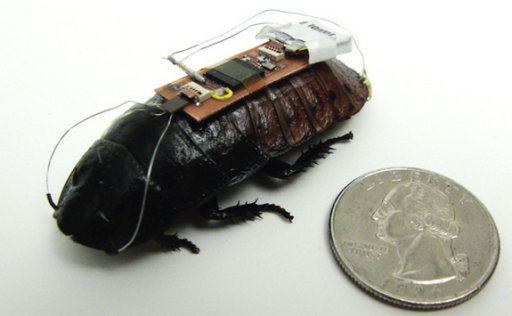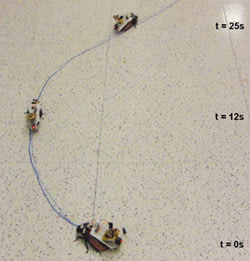What is Soldering?
Soldering - a must skill for all electrical and electronic works. “Soldering” is defined as the process of joining two pieces of metals using a filler metal, known as solder, having a low melting point below the melting point of the work piece. It is often confused with welding but the difference between them is, in soldering the work piece is not melted, they are joined using a filler metal, but in welding work piece is joined by melting.
History
Soldering was practiced as far back as 5000 years ago in Egypt. Soldering was widely performed around 4000 years ago when tin was discovered as soldering metal. The process of soldering was introduced in Mediterranean region, and was followed in the Roman Empire, Swiss and Hungaria. Soldering has improved a lot from culture to culture and generation to generation and in today’s scenario it is the best method for fabrication and assembly of microelectronics.
Types of Soldering
Soldering is classified as shown in the image below:
1. Soft soldering
It is a process for joining small intricate parts having low melting points which damages when soldering process is carried out at high temperature. It uses tin-lead alloy as filler material. The melting point of the filler material should be below 400oC (752oF). It uses gas torch as the heat source.
2. Hard soldering
In this process, hard solder connects two pieces of metals by expanding into the pores of the work piece opened by high temperature. The filler material possess high temperature above 450oC (840oF).
It comprises of two parts namely silver soldering and brazing.
2.1 Silver soldering
It is a clean process useful for fabricating small fittings, doing odd repairs and making tools. It uses an alloy containing silver as filler material. Silver provides free flowing characteristics but silver solder is not good at gap filling hence, different fluxes are recommended for precised silver solder.
2.2 Brazing
Brazing is a process of joining two pieces of base metals by creating melted metallic filler that flows by capillary attraction across the joints and cools to form a solid bond through atomic attraction and diffusion. It creates an extremely strong joint. It uses brass alloy as filler material.
SOLDER
It is any of various fusible alloys usually tin or lead used to join metallic parts. It is symbolized by two numbers which represents the percentage of each metal in a mixture. The first number refers to the percentage of tin and second to the percentage of lead. It usually melts at a temperature of about 200oC. Since solder has tin content, coating a surface with solder is called “tinning”.
Types of solder
· 60/40 solder- its composition is 60% tin and 40% lead. It melts at 374oF. It forms high, rounded, beaded seams. Because of its low relatively melting point this type of solder is easy to rework to maintain a smooth finish.
· 50/50 solder- its composition is 50% tin and 50% lead. Its melting point is 421oF. This type of solder produces a much flatter bead than 60/40. Because of its high melting point this type of solder is often used on the back of stained glasses, to protect it from melting when soldering the front.
· 63/37 solder- its composition is 63% tin and 37% lead. This type of solder is an excellent solder to bead up the outside rim of copper foiled pieces. It is often referred as decorated or quick set solder.
· Lead free solder- This type of solder performs similar to 50/50 solder. Lead free solder is a most expensive solder, but when constructing pieces that will contact food or that are handled frequently, this type of solder is different.
The best size of solder for electronic circuit board is 22swg (SWG=standard wire gauge). Solder for electronic use contains tiny cores of flux. Without flux most joints would fail because metals quickly oxidize and the solder itself will not flow properly.
Now the question arises, why solder method is preferred over other bonding methods?
Since low energy is required to solder, it is relatively inexpensive and easy to use. If the joints are properly soldered they are highly reliable and can last for years decade and centuries. In addition to this, solder joints are easy to repair.
Process of soldering
The basic soldering operation is performed in the following steps:
Cleaning - Heated metal are prone to oxidize rapidly. That is why oxides, scale and dirt must be removed by chemical or mechanical actions. Hence, initially, we check the tip of the soldering iron which should be clean and shiny, suitable for the project to be carried out. If not, then to fulfill the requirements of the project, small amount of the solder is added on the tip of the iron.
For effective cleaning of the tip of soldering iron, one should ensure that the sponge used for the same should be damped. As a dry sponge will not clean the tip effectively, and a wet sponge will lower the temperature of the tip making for an ineffective solder joint.
Heating- The temperature of the soldering station should be adjusted to a considerable level of 350oC, so as to achieve the required melting conditions of the alloy used for soldering.
Insertion- Further, the components which are to be soldered, are inserted in the holes of the circuit board by bending the lead using fine pliers, so that they can slide easily in the holes provided on the printed circuit pad. Then the leads protruding from the bottom of the circuit board, is bend at an angle of approx 45o.
Cut off the leads of the component which are close to the outer edge of the solder pad.
Soldering - the lead and the pad are heated simultaneously, holding the soldering iron at an angle of 45o and keeping the solder wire in contact to the space between the iron tip and lead. As the solder melts around the joints, the soldering wire should be kept still for good results. And remove the solder tip first and the solder wire next.
After soldering the joint, instead of blowing off the solder joint, allow it to cool naturally.
Removal of residue- Using isopropyl alcohol, and a bristle brush the printed circuit board should be cleaned thoroughly after the soldering of the components is completed. This process removes the flux residue and the unwanted contaminations present on the circuit board. If any of the flux remains, it’ll continue to react with the solder, causing oxidation. Therefore, this step is very important.
Finishing - finishing wax is used after cleaning process for enhancing the color of the patina making it either rich black or shinny copper and to keep it looking it’s best. Apply the patina to the solder lines using a cotton swab.
Types of Soldering Processes:
Wave Soldering
It is one of the primary techniques of soldering in which electronic components are soldered to a printed circuit boards. A solder wave is created by a pump located at the bottom of the solder pot. Components are inserted into the holes and the loaded PCB is placed onto a conveyer, which brings it into the contact with the wave surface. The solder wets the metallic area on the board, creating electrical and mechanical connections. The wave soldering technique encompasses a sequence of process, all of which are contained in same apparatus. First of all, the surface is coated with flux. After the flux is applied, the substrate is passed through a preheating stage which promotes the activation of flux, evaporates the volatiles of flux and reduces the thermal shock to the substrate and devices when it passes onto the solder wave. After this, surface board passes from the solder wave and leads to formation of joints. After passing the solder wave, the board cools through natural heat loss.

Reflow Soldering
Reflow soldering is a widely spread technology of soldering of surface mount semiconductor packages. The reflow process consist of applying a eutectic solder paste to a circuit board, placing devices onto the plate, and then conveying the board through a reflow oven or under an infrared lamp or by using hot air pencil, with successive heating elements of varying temperature. When the entire assembly is subjected to controlled heat, solder melts and the joint is permanently connected.
FLUX
Soldering flux is formulated to remove a film of oxides from the metal and make the solder and the metal more able to dissolve in each other. Flux must be able to deoxidize metal surfaces at high temperatures without decomposing. The flux material simultaneously reduce the surface tension of the flowing solder and in this way, brings about better wetting characteristics and a more favorable flowing property.
Rosin flux
It is the oldest, most popular and still the most effective soldering flux. Rosin, which is the base of this type of flux, is extracted from pine trees. The active agents in rosin flux are abeitic acid and plicatic acid; it is the reaction between these acids and the metallic oxides on the joint materials that provides the cleaning required for wetting the joint. After soldering, rosin based flux leaves behind the residue which is non-corrosive, non conducting, moisture and fungus resistant but it must be cleaned from the surface before carrying any further process to minimize fuss and irritation in eyes and skin caused by combustion.
Water soluble fluxes
These are the fluxes that wash away when the board is washed with the ordinary water mainly hot water. Occasionally, all the water soluble flux leaves behind residues. These are carboxylic acids and detergent which produces irritating fumes. Hence, in addition to hot water saponifier is added to help the cleaning process. Saponifiers are alkaline and may be corrosive; they react with acid residue on board to form soap and glycerin, which is relatively easy to wash with hot water. If adequate cleaning of the residues is not carried then they may cause sustained corrosion and induces electrical problems.
No clean fluxes
These fluxes leave minimal residues which need not be removed after soldering from finished electronic assemblies. They vanish under the influence of heat. Many no-clean fluxes are organically based, usually on an alcohol, and have a low solid content. Some water based no-clean fluxes have been developed but these must be handled with care to avoid severe skin irritation. No-clean fluxes have been found to be even more irritating than rosin fluxes. Fluxes must react with the pad material to be effective and enhance wetting; the acids in these fluxes do that, but chemical reactions with the metals in the pads and the plastic substrate produce very harsh gases.
Desoldering
The reverse process of soldering is desoldering. It is a process of removal of solder and components mounted on circuit boards for repair purpose.
What if a soldering is not done properly? How to resolve this problem? Simply, the soldered joint is removed by the process of desoldering. For this purpose a vacuum pump is activated to remove solder from the plated through holes. The lead over which the desoldering tip was placed is moved in a circular motion for rounded leads and back and forth for flat leads.
Applications
Soldering has the most common use in plumbing and in the field of electronics where it is used to mount electronic components on printed circuit boards. In addition to this, soldering has its application in jewellary making, cooking wares, tools, stained glass work and many more. It can also be used to repair a leakage in containers.


































